Thoughts on Web3 User Growth
We often see that many Crypto and Web3 products have achieved good growth in a short period of time, but users are lost quickly, and finally the project enters a "death spiral" and fails. In the traditional field, the impact of the stock market on entrepreneurs and products is not so great and not so direct, but in the Web3 field, the currency market has a particularly large impact: the bull market will ascend to heaven, and the bear market will wipe out more than 90% of the projects. These projects often have a common feature that under the background of the bear market, the price of Token issued by the project party has been falling all the way, so that the Token incentives have failed or even reversed the interests of users, resulting in serious loss of users.
image description

secondary title
Basic Thoughts on Web3 User Growth
The bull-bear cycle of the currency market has a huge impact on user growth, but entrepreneurs should not be bound by macro factors. To grow users, the first thing is to find the "market" that matches the product, that is, the "M" in PMF (Product Market Fit) - don't be greedy to satisfy the entire "M" or "big M", but combine your own products The characteristics and resource endowments are positioned to match their own M. After that, we will go deep vertically first, and then consider horizontal expansion after obtaining the first-tier market share in a single market. For Chinese entrepreneurs, it is an unwise choice to give up the Chinese-speaking community and Chinese users that they are best at dealing with. This is equivalent to giving up one-third of the global B-end and C-end users, which is equivalent to giving up their own basic disk.
In terms of product design and development, the minimum viable product MVP (Minimum Viable Product) is a very good idea. It means that in the process of product launch, first launch the basic functions, which can meet the minimum business closed-loop in the most core scenarios, and then iterate, optimize and enhance according to market feedback, and finally iterate products that meet the optimal solution of the market and users. Developers don't try to build a "monolithic" product with a perfect vision. Instead, simplify user onboarding and build a PMF-compliant MVP product by identifying and solving the user's biggest "one" problem. During this process, developers often have to say 'no' to hundreds of good ideas.
If PMF can be understood as a product state when the product matches the market, then MVP is an effective way to make the product reach PMF. Bringing PMF-compliant MVPs to market is GTM (Go To Market). The purpose of GTM is to acquire and retain users. Its customer acquisition rules usually follow the "funnel model": from the acquisition of new customers at the top of the funnel to the conversion and retention of users at the bottom of the funnel, it is a process of decreasing number of users.
image description
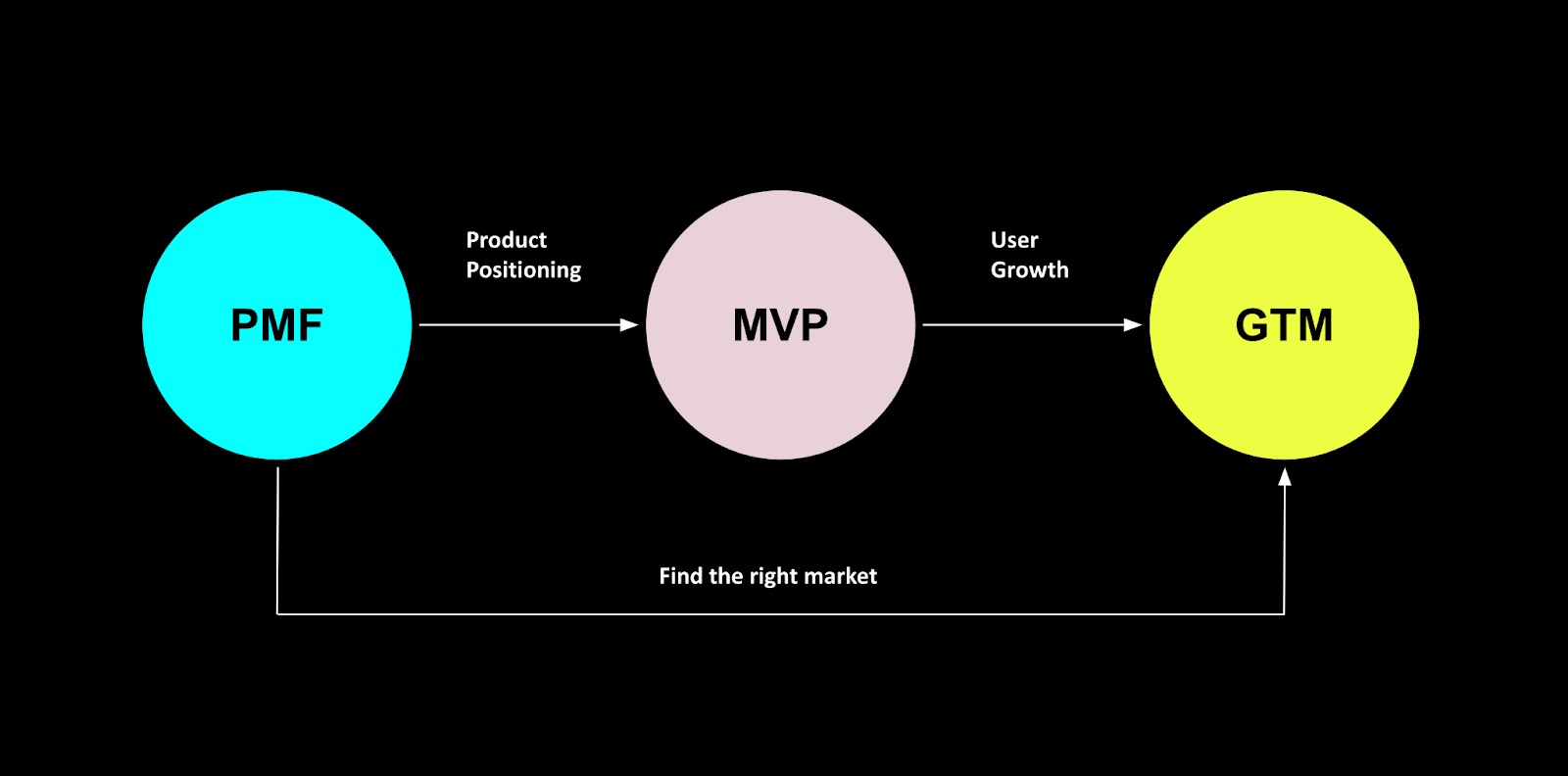
secondary title
text
Regarding the product market fit PMF, the main considerations are as follows:
Why are we doing this product/feature?
Does the product/feature respond to the needs of the market?
Why do this product/feature now, not later?
CBInsights.com once conducted a research on the reasons for the failure of entrepreneurial projects. No Market Need ranked first, accounting for 42%, surpassing the second Ran Out of Cash and the third Not the Right Team. Since this issue is very important, developers should think about it when planning the product, and can't wait for the product to go online before going to the market. It is easy for people to ignore the market research work that should be done in advance because of their own prejudices and paranoia.
image description

Figure 2: Product Market Fit PMF
Find the right market segment, lock the target user group, and discover unmet needs
Find the right market segment and the right target users, which will ultimately determine the extent to which the product can meet the needs of the target users. We target the target user group by subdividing a large market, so as to establish a user portrait library and conduct demand analysis. After building a profile of your target audience, the next step is to understand their needs. When trying to create value for users, it is also necessary to find a good market opportunity corresponding to this demand. If the needs of users in a certain market have been well met, then do not enter this market again, and must find a new market again. When you find that the user needs of a certain market have not been well met, you can cut in.
Develop product strategy, define value proposition, highlight differentiation and core competencies
Users will inevitably compare various competing products with their own products at some point in the future, so user satisfaction largely depends on the highlights of their own products, and it is these highlights that constitute product differentiation. The so-called value proposition is to highlight the highlights of its own product, so that users can experience that this product can better meet their needs than competing products. Among the many needs that the product can meet, which one should we focus on? What unique features does the product have that delight users? How does the product outperform the competition? These are the three core questions of product strategy.
Feature set of Minimal Viable Product MVP was curated and finalized with user requirements testing
secondary title
MVP (Minimum Viable Product): rapid iteration, avoid unnecessary mistakes
Regarding the minimum viable product MVP, the main considerations are the following:
What is the product/feature made of?
What kind of problems can it solve?
What is the iteration plan for this feature in the future?
What is the value of the product/feature?
The so-called MVP is to use the minimum development cost and the shortest development time to develop a usable product that can express the highlights and innovations of the project. Although this product is minimal, it can quickly verify ideas. People have the psychology of pursuing perfection, and feel that it would be terrible not to have this function, but in reality nothing will happen. If you use the Non-MVP approach, not only may you spend a lot of time on peripherals, auxiliary or enhanced functions in the development of the first version, but you will continue to go wrong in subsequent version updates. And when we start to develop products with MVP ideas, our attention is focused on more important places.
MVP is not the most perfect product, its purpose is to quickly launch to the market to test whether it is feasible. Through the verification of market demand, and then constantly correct and adjust the direction, iteratively produce a product with market space and agreement income. In fact, MVP doesn’t even need to be a mainnet product, it just needs to be a well-designed testnet product that can give users a clear experience. In this way, you can avoid the dilemma of spending a lot of money but making a product that the market does not pay for.
Developers should pass the MVP to the target user group, and collect relevant feedback on product preferences from this group of people to see if they think they need this product, so as to test whether the first version of the product is about finding the right market segment and finding the right product. Thoughts on the target user group. If the idea is correct, quickly increase the exposure of the product in the market, so that these seed users can really use this product.
image description
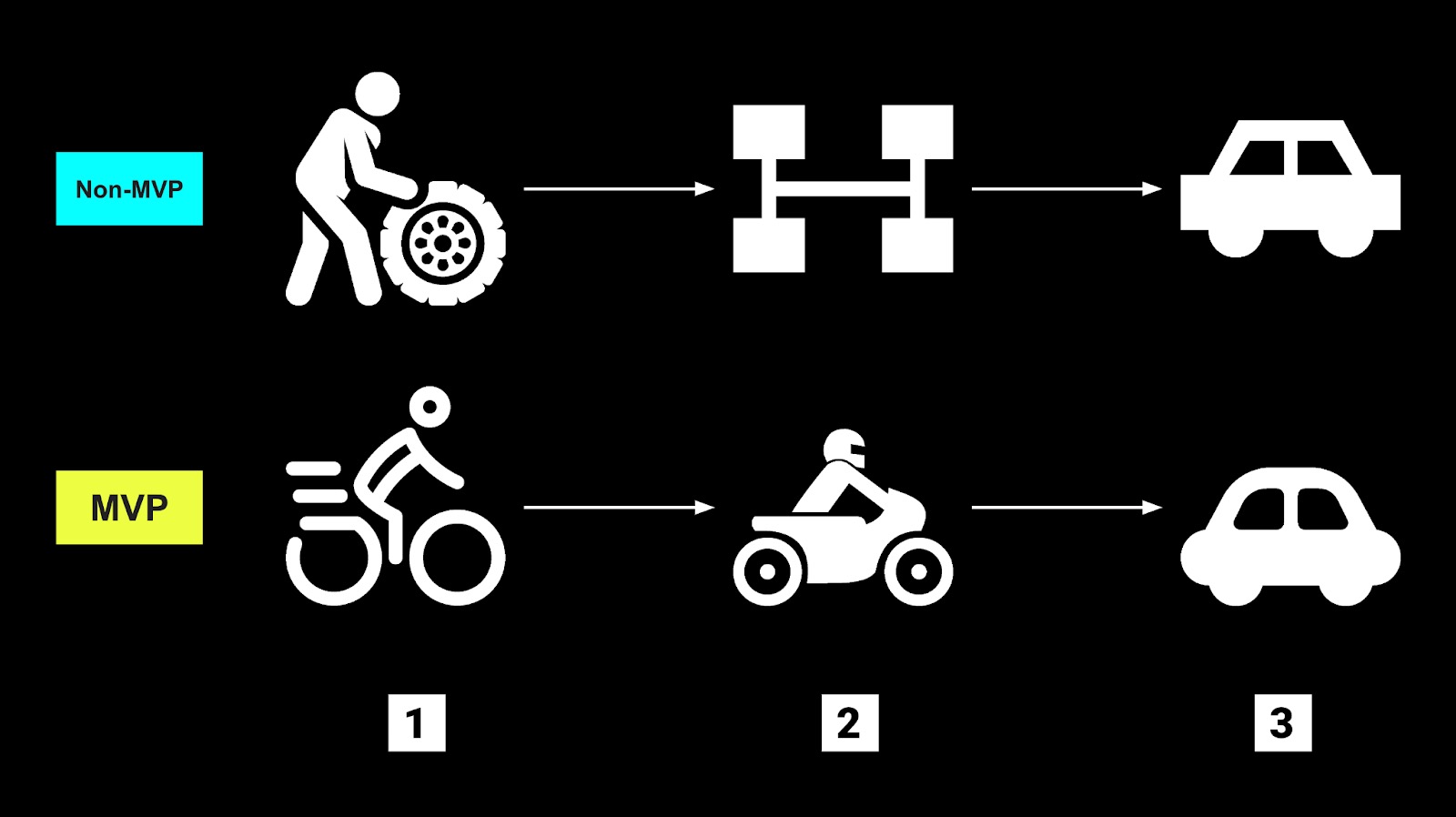
secondary title
GTM (Go To Market): Pulling in the new and keeping the old in place, and managing the community well
With regard to going to market GTM, the main considerations are as follows:
How does the product interact with users?
Need to help users learn how to use the product?
Is the user frequency high?
Where is the product released? Local, national, or international?
Which channels to cooperate with?
What are the limitations of the partnership channel?
In Web2, GTM usually acquires users through marketing means. In Web3, GTM usually acquires users through marketing means and operates a "community" with richer connotations. The community includes not only users, but also developers, investors, and partners, all of whom are stakeholders of the Web3 project. Every good Web3 project usually has a strong community. Some projects follow the principle of "community first", some project decisions are "community-led", and some projects are directly "community-owned". Only by continuously meeting user needs and maximizing users' subjective utility of products can we have a highly engaged and high-quality community.
image description
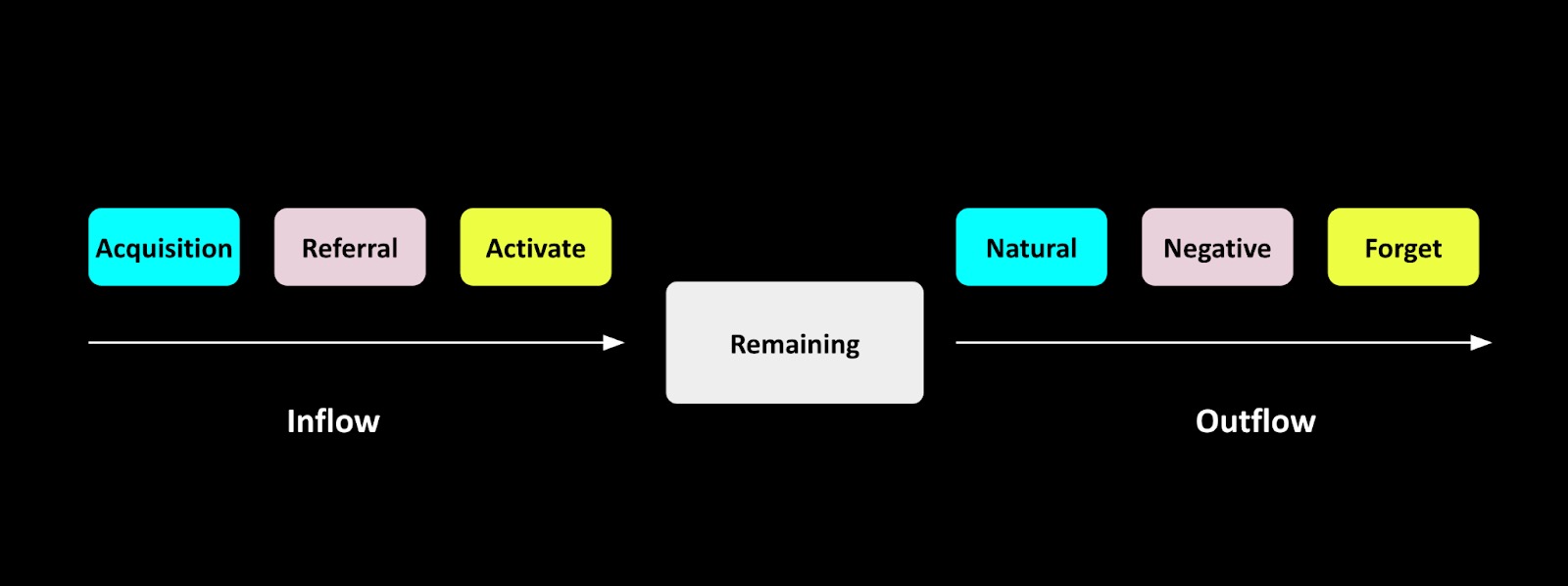
Figure 4: User Inflow and Outflow Elements
1. Acquire new users
Airdrop with task interaction is an important GTM initiative. It means that the project distributes tokens to users. Users need to complete certain tasks to have the opportunity to obtain tokens. Sometimes there are other conditions attached, such as holding specific tokens. currency. Encouraging early users to complete task interactions is a common method of project cold start, which can obtain the first batch of seed users at a very low cost.
image description
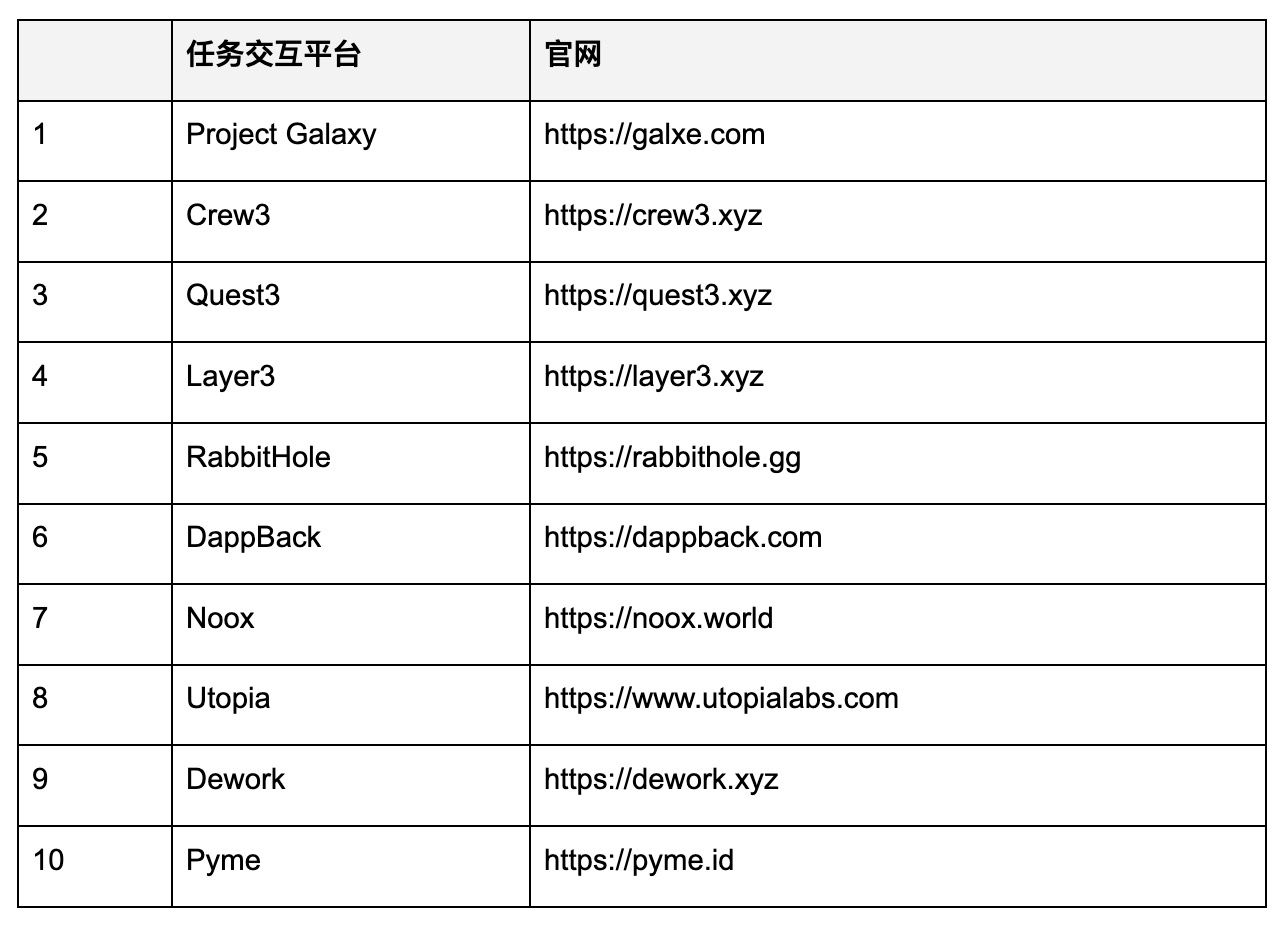
Table 2: Commonly used Web3 task interaction platforms
2. Improve activity and retention
Although token incentives will attract users, it alone is not enough to increase user stickiness. Since the bear market in the currency circle in 2021, a major challenge in operating projects is "users come and go quickly". Inactivity and inability to retain users is a major problem in the current Web3 project. The project party should spend more energy to convert first-time users into loyal users, continuously optimize products, and continue to engage in community activities to provide users with a better experience. Holding AMAs on Twitter Space, Discord, and Telegram is a common way to increase community activity and popularity.
3. Promotion and self-propagation
Self-propagation Referral refers to promoting products to more new users through existing users. If existing users like it and have a good experience, they can spontaneously share the product in the community or push it to their friends peer-to-peer. This is the lowest cost and the most extensive way to acquire customers. So how to make users willing to share, this requires the project side to design a set of incentive mechanisms. It can not only reward the project party Token, but also use physical gifts, such as clothing, skateboards, snowboards, mugs, etc. that reward Logo. In addition, it is necessary to analyze the on-chain behavior data of new and old users to improve the conversion rate and adjust the operation strategy.
Recommend Referral decomposes the original advertising cost used to attract new customers into old user recommendation rewards and new user registration rewards, that is, advertising cost = old user recruiting rewards + new user registration rewards. Pulling new Referrals greatly reduces the cost of customer acquisition, and is more efficient than directly purchasing keywords and purchasing information flow advertisements. It's nothing innovative, but it has a long-lasting, effective transformational effect on the project.
image description
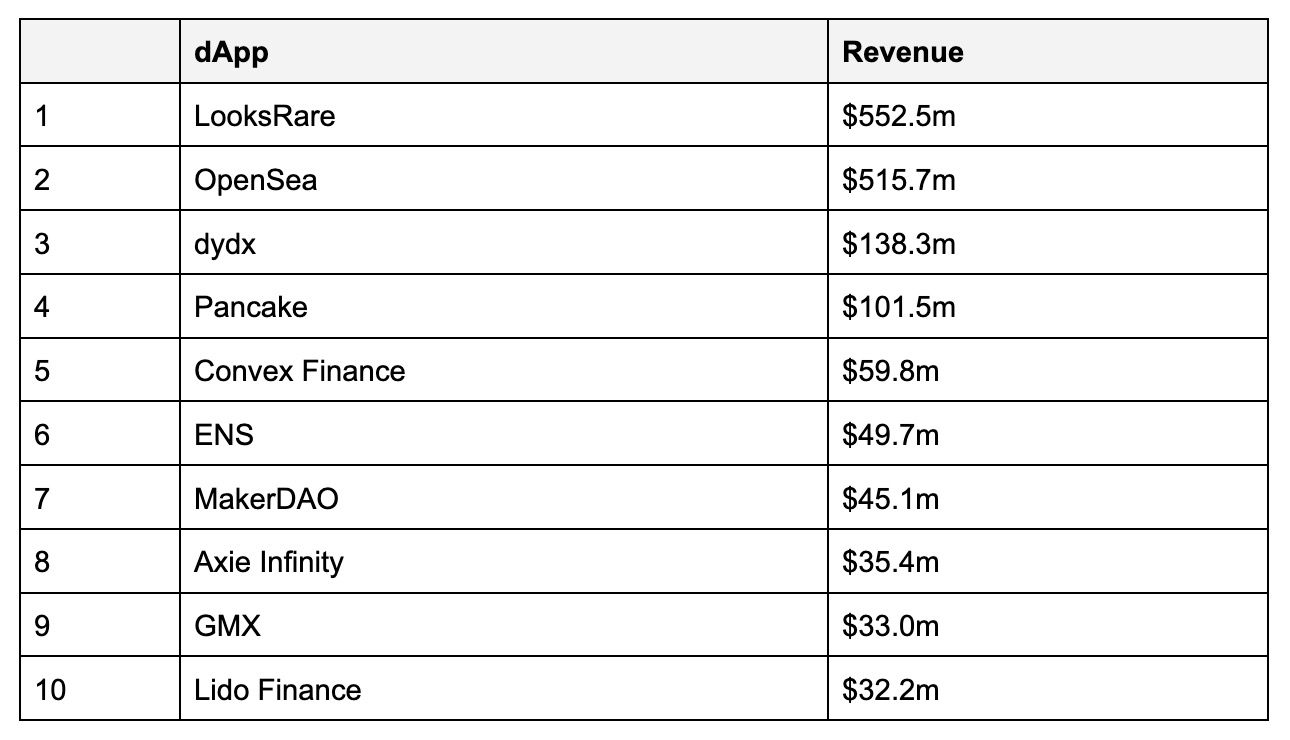
image description
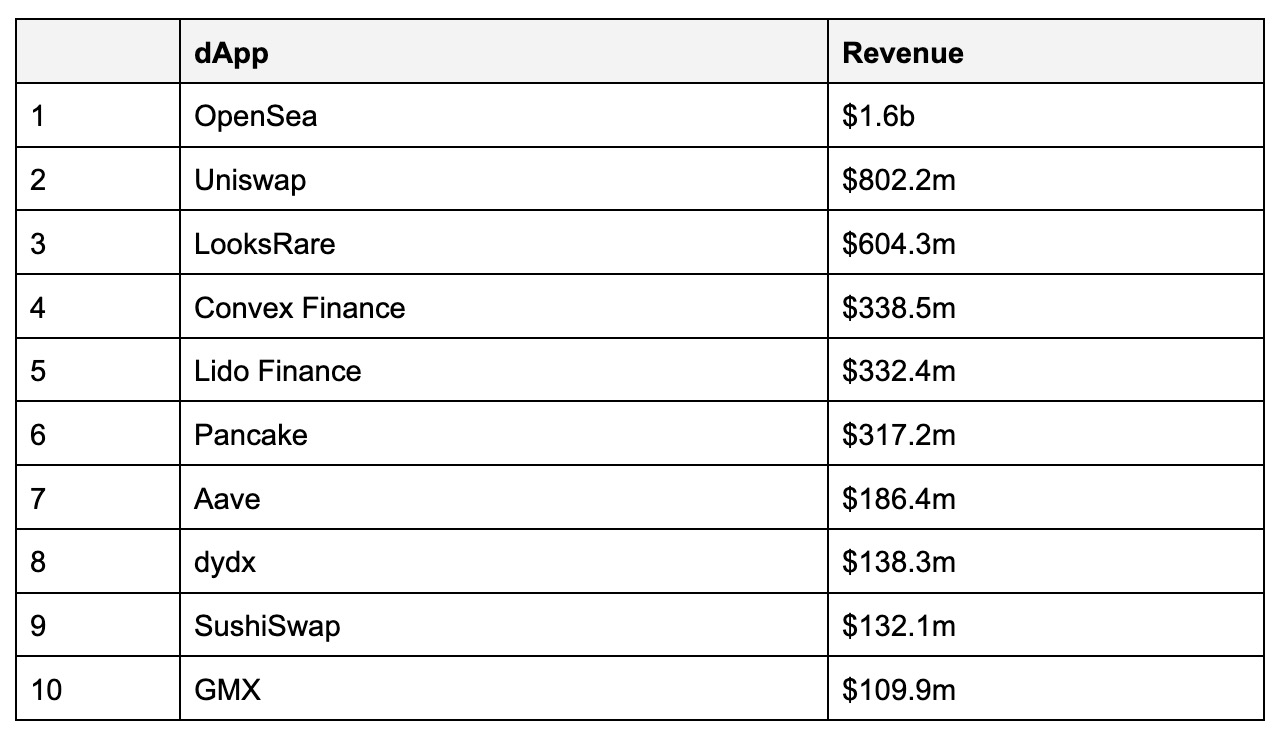
Table 4: Ranking of dApp Fees in 2022



